Aboli Marathe
Reinforcement Learning from Diffusion Feedback: Q* for Image Search
Nov 27, 2023Abstract:Large vision-language models are steadily gaining personalization capabilities at the cost of fine-tuning or data augmentation. We present two models for image generation using model-agnostic learning that align semantic priors with generative capabilities. RLDF, or Reinforcement Learning from Diffusion Feedback, is a singular approach for visual imitation through prior-preserving reward function guidance. This employs Q-learning (with standard Q*) for generation and follows a semantic-rewarded trajectory for image search through finite encoding-tailored actions. The second proposed method, noisy diffusion gradient, is optimization driven. At the root of both methods is a special CFG encoding that we propose for continual semantic guidance. Using only a single input image and no text input, RLDF generates high-quality images over varied domains including retail, sports and agriculture showcasing class-consistency and strong visual diversity. Project website is available at https://infernolia.github.io/RLDF.
t-RAIN: Robust generalization under weather-aliasing label shift attacks
May 15, 2023Abstract:In the classical supervised learning settings, classifiers are fit with the assumption of balanced label distributions and produce remarkable results on the same. In the real world, however, these assumptions often bend and in turn adversely impact model performance. Identifying bad learners in skewed target distributions is even more challenging. Thus achieving model robustness under these "label shift" settings is an important task in autonomous perception. In this paper, we analyze the impact of label shift on the task of multi-weather classification for autonomous vehicles. We use this information as a prior to better assess pedestrian detection in adverse weather. We model the classification performance as an indicator of robustness under 4 label shift scenarios and study the behavior of multiple classes of models. We propose t-RAIN a similarity mapping technique for synthetic data augmentation using large scale generative models and evaluate the performance on DAWN dataset. This mapping boosts model test accuracy by 2.1, 4.4, 1.9, 2.7 % in no-shift, fog, snow, dust shifts respectively. We present state-of-the-art pedestrian detection results on real and synthetic weather domains with best performing 82.69 AP (snow) and 62.31 AP (fog) respectively.
WEDGE: A multi-weather autonomous driving dataset built from generative vision-language models
May 12, 2023



Abstract:The open road poses many challenges to autonomous perception, including poor visibility from extreme weather conditions. Models trained on good-weather datasets frequently fail at detection in these out-of-distribution settings. To aid adversarial robustness in perception, we introduce WEDGE (WEather images by DALL-E GEneration): a synthetic dataset generated with a vision-language generative model via prompting. WEDGE consists of 3360 images in 16 extreme weather conditions manually annotated with 16513 bounding boxes, supporting research in the tasks of weather classification and 2D object detection. We have analyzed WEDGE from research standpoints, verifying its effectiveness for extreme-weather autonomous perception. We establish baseline performance for classification and detection with 53.87% test accuracy and 45.41 mAP. Most importantly, WEDGE can be used to fine-tune state-of-the-art detectors, improving SOTA performance on real-world weather benchmarks (such as DAWN) by 4.48 AP for well-generated classes like trucks. WEDGE has been collected under OpenAI's terms of use and is released for public use under the CC BY-NC-SA 4.0 license. The repository for this work and dataset is available at https://infernolia.github.io/WEDGE.
RestoreX-AI: A Contrastive Approach towards Guiding Image Restoration via Explainable AI Systems
Apr 03, 2022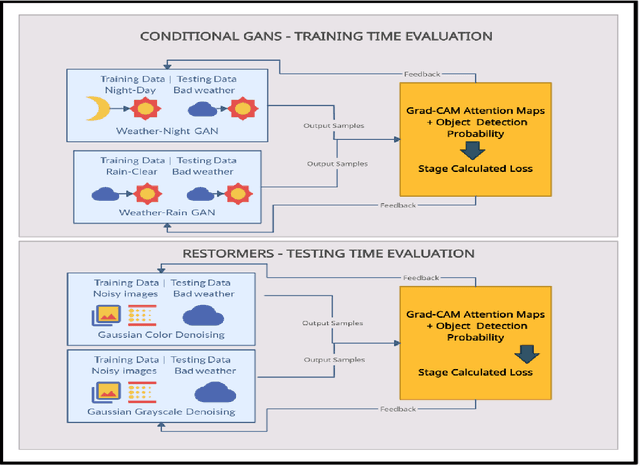
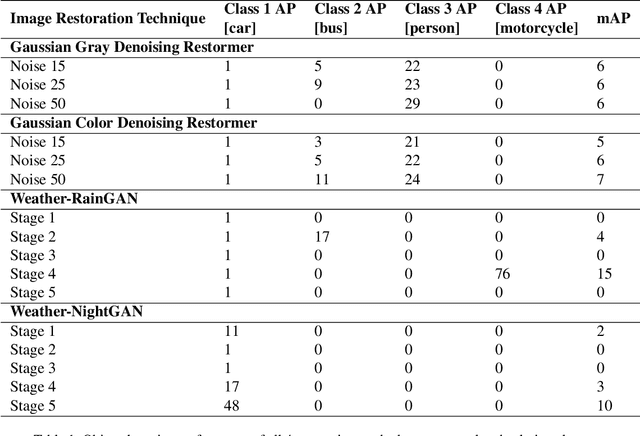
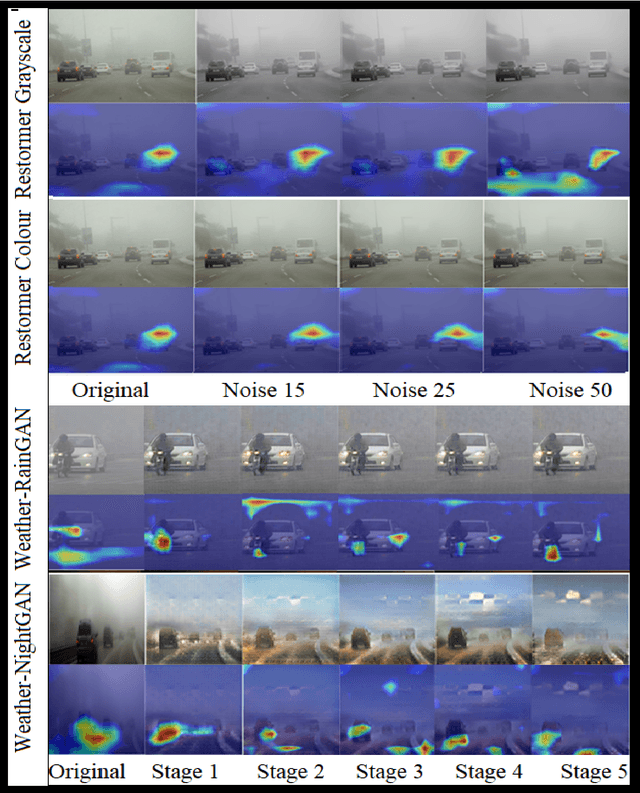

Abstract:Modern applications such as self-driving cars and drones rely heavily upon robust object detection techniques. However, weather corruptions can hinder the object detectability and pose a serious threat to their navigation and reliability. Thus, there is a need for efficient denoising, deraining, and restoration techniques. Generative adversarial networks and transformers have been widely adopted for image restoration. However, the training of these methods is often unstable and time-consuming. Furthermore, when used for object detection (OD), the output images generated by these methods may provide unsatisfactory results despite image clarity. In this work, we propose a contrastive approach towards mitigating this problem, by evaluating images generated by restoration models during and post training. This approach leverages OD scores combined with attention maps for predicting the usefulness of restored images for the OD task. We conduct experiments using two novel use-cases of conditional GANs and two transformer methods that probe the robustness of the proposed approach on multi-weather corruptions in the OD task. Our approach achieves an averaged 178 percent increase in mAP between the input and restored images under adverse weather conditions like dust tornadoes and snowfall. We report unique cases where greater denoising does not improve OD performance and conversely where noisy generated images demonstrate good results. We conclude the need for explainability frameworks to bridge the gap between human and machine perception, especially in the context of robust object detection for autonomous vehicles.
In Rain or Shine: Understanding and Overcoming Dataset Bias for Improving Robustness Against Weather Corruptions for Autonomous Vehicles
Apr 03, 2022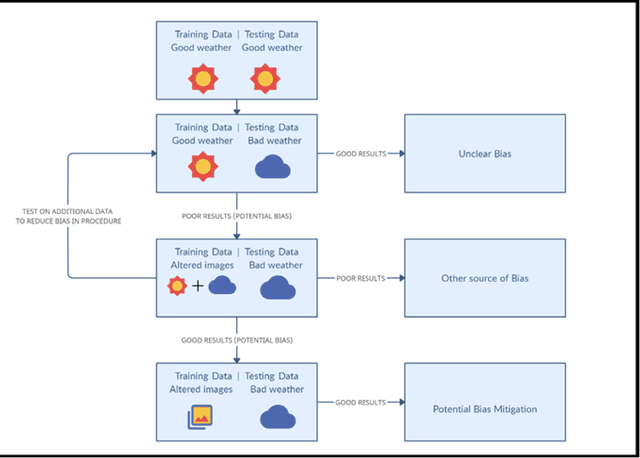
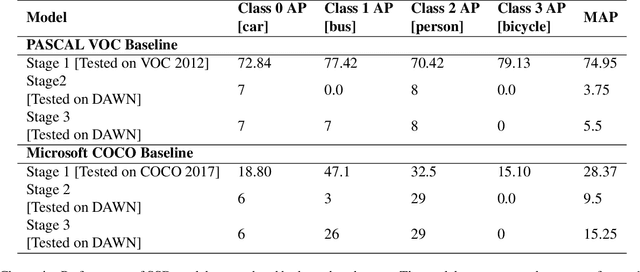
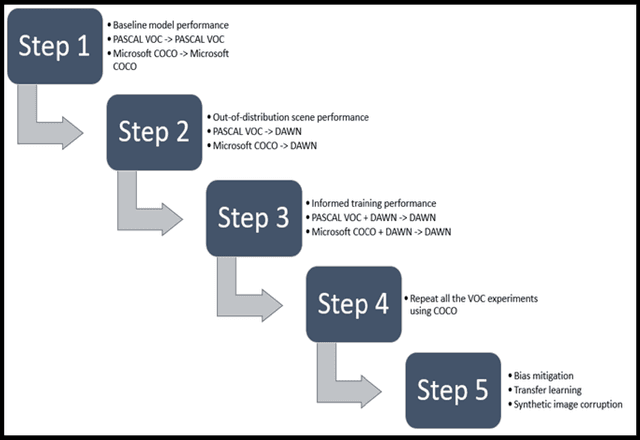

Abstract:Several popular computer vision (CV) datasets, specifically employed for Object Detection (OD) in autonomous driving tasks exhibit biases due to a range of factors including weather and lighting conditions. These biases may impair a model's generalizability, rendering it ineffective for OD in novel and unseen datasets. Especially, in autonomous driving, it may prove extremely high risk and unsafe for the vehicle and its surroundings. This work focuses on understanding these datasets better by identifying such "good-weather" bias. Methods to mitigate such bias which allows the OD models to perform better and improve the robustness are also demonstrated. A simple yet effective OD framework for studying bias mitigation is proposed. Using this framework, the performance on popular datasets is analyzed and a significant difference in model performance is observed. Additionally, a knowledge transfer technique and a synthetic image corruption technique are proposed to mitigate the identified bias. Finally, using the DAWN dataset, the findings are validated on the OD task, demonstrating the effectiveness of our techniques in mitigating real-world "good-weather" bias. The experiments show that the proposed techniques outperform baseline methods by averaged fourfold improvement.
Investigating the Relationship Between World Development Indicators and the Occurrence of Disease Outbreaks in the 21st Century: A Case Study
Sep 20, 2021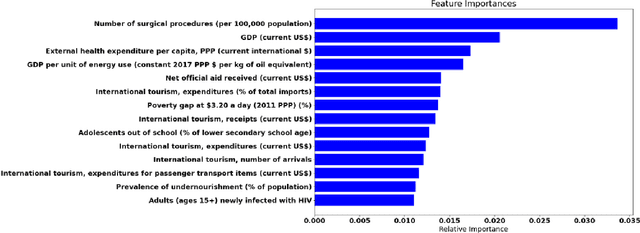


Abstract:The timely identification of socio-economic sectors vulnerable to a disease outbreak presents an important challenge to the civic authorities and healthcare workers interested in outbreak mitigation measures. This problem was traditionally solved by studying the aberrances in small-scale healthcare data. In this paper, we leverage data driven models to determine the relationship between the trends of World Development Indicators and occurrence of disease outbreaks using worldwide historical data from 2000-2019, and treat it as a classic supervised classification problem. CART based feature selection was employed in an unorthodox fashion to determine the covariates getting affected by the disease outbreak, thus giving the most vulnerable sectors. The result involves a comprehensive analysis of different classification algorithms and is indicative of the relationship between the disease outbreak occurrence and the magnitudes of various development indicators.
Modelling Major Disease Outbreaks in the 21st Century: A Causal Approach
Sep 17, 2021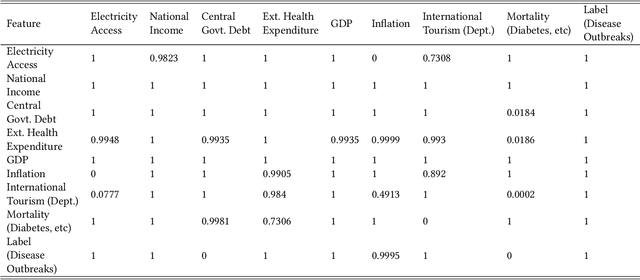
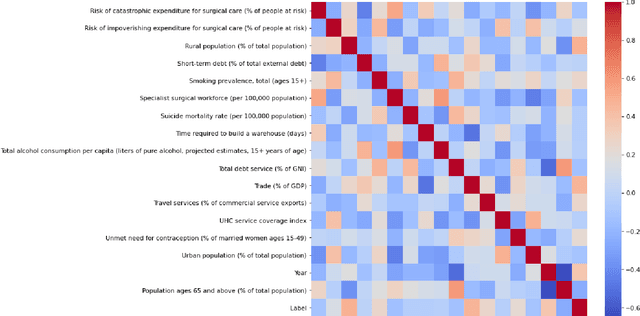
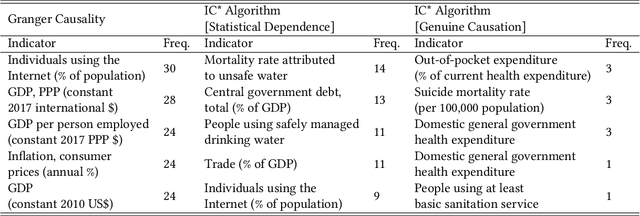
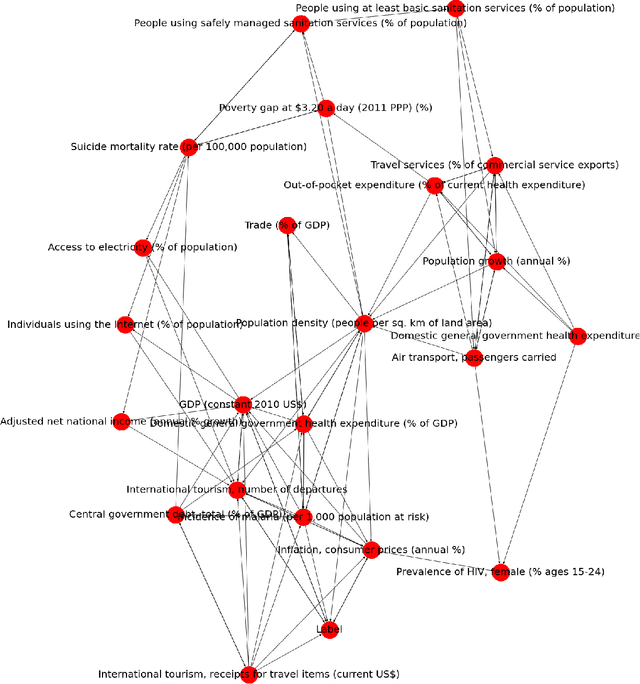
Abstract:Epidemiologists aiming to model the dynamics of global events face a significant challenge in identifying the factors linked with anomalies such as disease outbreaks. In this paper, we present a novel method for identifying the most important development sectors sensitive to disease outbreaks by using global development indicators as markers. We use statistical methods to assess the causative linkages between these indicators and disease outbreaks, as well as to find the most often ranked indicators. We used data imputation techniques in addition to statistical analysis to convert raw real-world data sets into meaningful data for causal inference. The application of various algorithms for the detection of causal linkages between the indicators is the subject of this research. Despite the fact that disparities in governmental policies between countries account for differences in causal linkages, several indicators emerge as important determinants sensitive to disease outbreaks over the world in the 21st Century.
 Add to Chrome
Add to Chrome Add to Firefox
Add to Firefox Add to Edge
Add to Edge